► Facelifted 197bhp Ford Fiesta ST driven
► Now five-door only but still tons of fun
► We round-up pre-facelift highlights, too
Alongside the rest of the Fiesta range, Ford has given the Fiesta ST hot hatch a little tickle.
On the one hand, this is fundamentally limited to updating the looks and increasing the torque – so Ford’s sensibly restrained itself from mucking around too much with what is by now a very well proven formula. On the other, the creeping sense of increased maturity that we commented on at the launch of the present model continues to mount, as even this feistiest of Fiestas is now five-door only.
This is probably one of those things that’s really going to bug some people. But from our perspective, as long as Ford is able to keep building the ST with such an effervescent personality we don’t really care how many ways there are to get into the cabin.
Similarly, the 2022 Fiesta ST is currently only available to buy in a single variant – the ST-3 – which includes the Performance Pack with the Quaife limited-slip differential as standard. Not a huge deal, as that’s the version we’d recommend anyway, but it does push the starting price up to £27,245.
We’ve also recapped some of the previous versions further down this page for your reference.
What’s new for the Fiesta ST facelift?
On the outside this a very much a nose-job. The latest Fiesta gets a raised and enlarged grille, which results in a slightly flattened profile – as if not so much from surgery as being on the wrong end of somebody’s fist.
Combined with the additional vents and scoops of the ST bodystyling, this gives the hot hatch version a vaguely pugnacious air. Which sounds harsh but is better than us describing it as looking like an angry catfish.
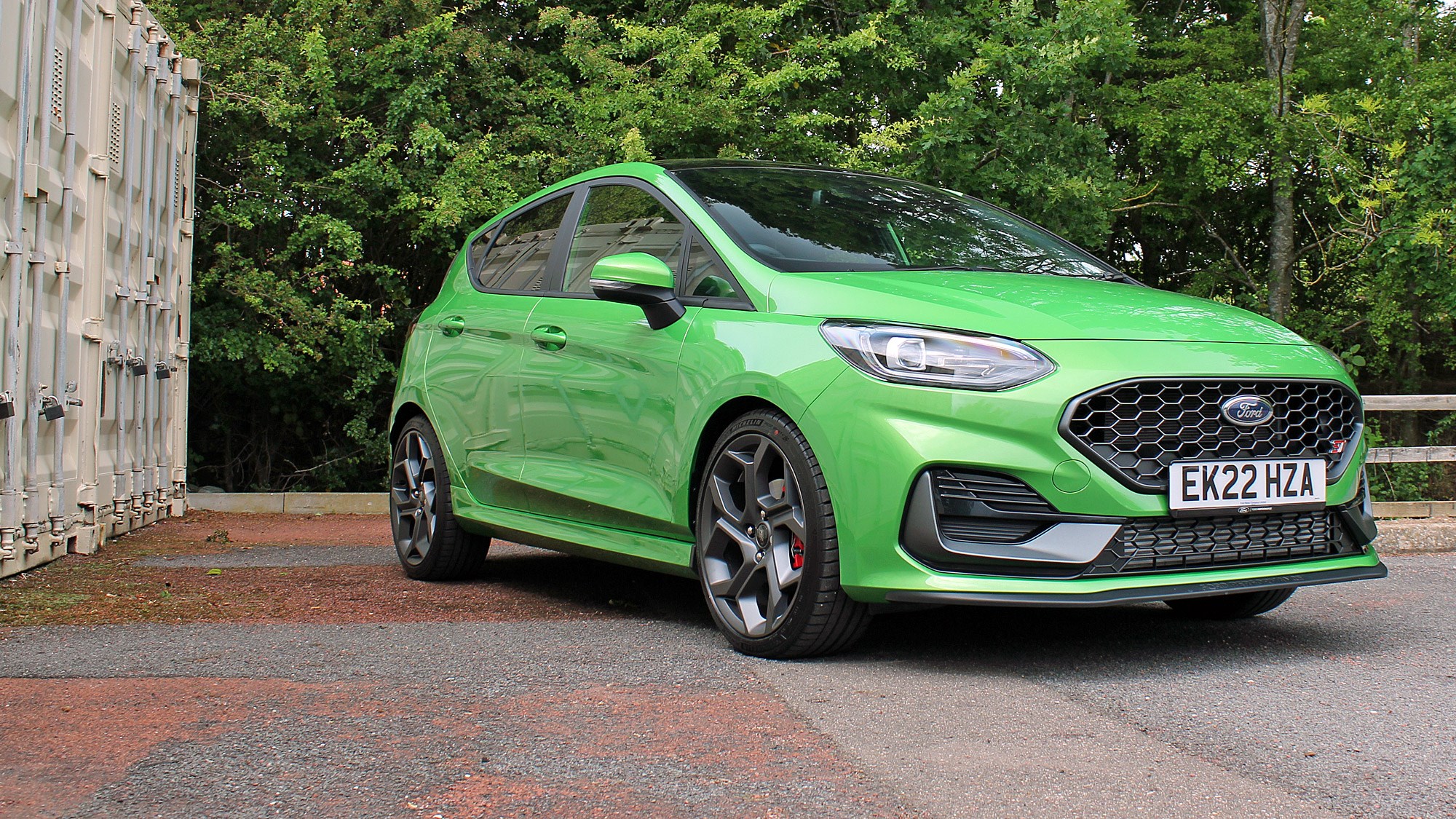
As previously, much of the exterior trimming is in dark Chrystaline Grey, matched to the Magnetite finish for the 18-inch alloy wheels. Any sense of subtlety this might presume is immediately dashed by the new Mean Green paint option – which we think looks absolutely fantastic, and makes it easy to identify the latest model at a distance.
The Ford Performance branding has taken a step up, too, being debossed into the prominent new front splitter as well as appearing on the seats, sill plates, and number plate surrounds.
The seats are worth a further mention as they’re now an in-house Ford Performance design that’s rather more generous in fitment than the Recaros you might have previously encountered. These will probably suit more people, more of the time, even if slimmer members of the team did miss the body-hugging nature of their predecessors.
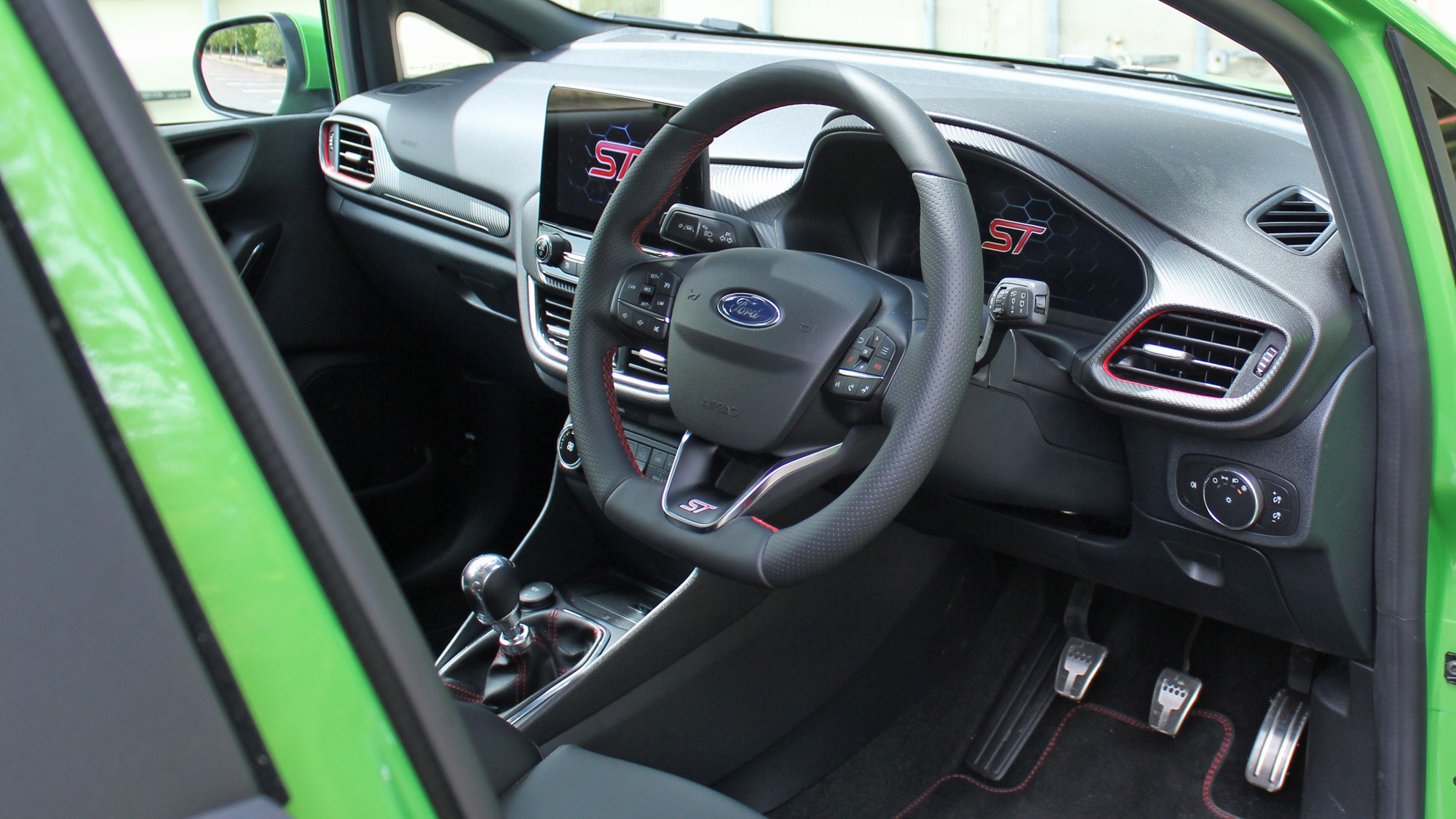
The red accenting is a little obvious for a hot hatch, but that’s probably fine. We like the carbonfibre-effect foil trimming less – too tacky, surely? A flat-bottomed wheel and plenty of gadgetry complete the interior.
The ST-3 includes launch control, Normal, Sport and Track driving modes, a 12.3-inch digital instrument cluster, infotainment with sat-nav, Apple CarPlay, Android Auto and reversing camera, and matrix LED headlights among its extensive standard equipment.
Sounds very grown up – is the Fiesta ST still fun to drive?
This really is quite a sensible car now. It’s very well equipped, easier to get in and out of, and feels nicely made. All stuff that might momentarily lull you into expecting a softer, duller driving experience.
Forget it.
The thumping low speed ride instantly reminds you that you’re now in the embrace of a performance car. The slightly fighty initial responses from the 1.5-litre three-cylinder turbo engine and the stiff steering, with its – typical-for-fast-Fords – ridiculously wide turning circle, then confirms that some effort is required from the driver here. The Fiesta ST is a car that loves to be loved, which means driving it as quickly as possible whenever that’s possible.

Do this, and you will experience almost unfettered joy. While the 197bhp triple still somehow doesn’t feel as gutsy as the old 1.6 – even with torque boosted to 235lb ft from the pre-facelift’s 213lb ft – it’s got a fizzy, feisty, thrummy nature that urges you to bounce it off the limiter. Shame it doesn’t sound a little better, the reedy racket sometimes failing to exactly reassure you that it’s really enjoying itself, but there’s no reason to complain about the way it gets the ST down the road; 0-62mph takes a claimed 6.5sec.
The faster you go, the better the ride gets – thank God – and it’s obvious the twin-tube Tenneco dampers have been tuned for abuse rather than shopping. At speed, the Fiesta begins to feel as if it’s skimming over the surface rather than clattering into it, and it’s just absurdly unfazed by mid-corner bumps. This is a car that wants you to be on the throttle.
For instance, the Quaife diff of the Performance Pack brings real tenacity in extremes – chuck the ST up on to three wheels, plant your right foot, and it just digs in to find traction. But the special source here is this Fiesta’s seemingly uncanny ability to anticipate the driver’s intentions. It never, ever feels like you’re going to catch it out, yet it always comes across as willing and involving rather than predictable and tame. A depth of capability that can only be the result of artful honing over many, many hours of testing and development.
Job done, then?
We can nit-pick a bit, if you like – the six-speed manual gearchange could be a little crisper, the animations the digital dials put you through every time you change driving mode are a little gimmicky. But as a form of transport that’s at once practical (for its size) yet supremely entertaining, few other cars come close to the Fiesta ST’s price/hilarity ratio – and that’s accounting for the cost looming ever-closer to £30k.
One of those other cars is most definitely the Hyundai i20N, however, which starts at just over £25k right now. So don’t automatically reach for the nearest Ford dealership without also giving that a whirl. If £30k is nothing, you should look at the GR Yaris, too.
Still keen on the ST but worried about your budget? Then you might be tempted to instead seek out a used example. In which case, keep reading, as below you’ll find our round-up of every version of the pre-facelift Fiesta ST on this page as well.
Older Ford Fiesta ST models
Our pre-facelift Fiesta ST info includes driving impressions of the car with and without the Performance Pack, along with the luminous orange Performance Edition introduced in mid-2019 and the dazzling blue ST Edition that arrived in mid-2020.
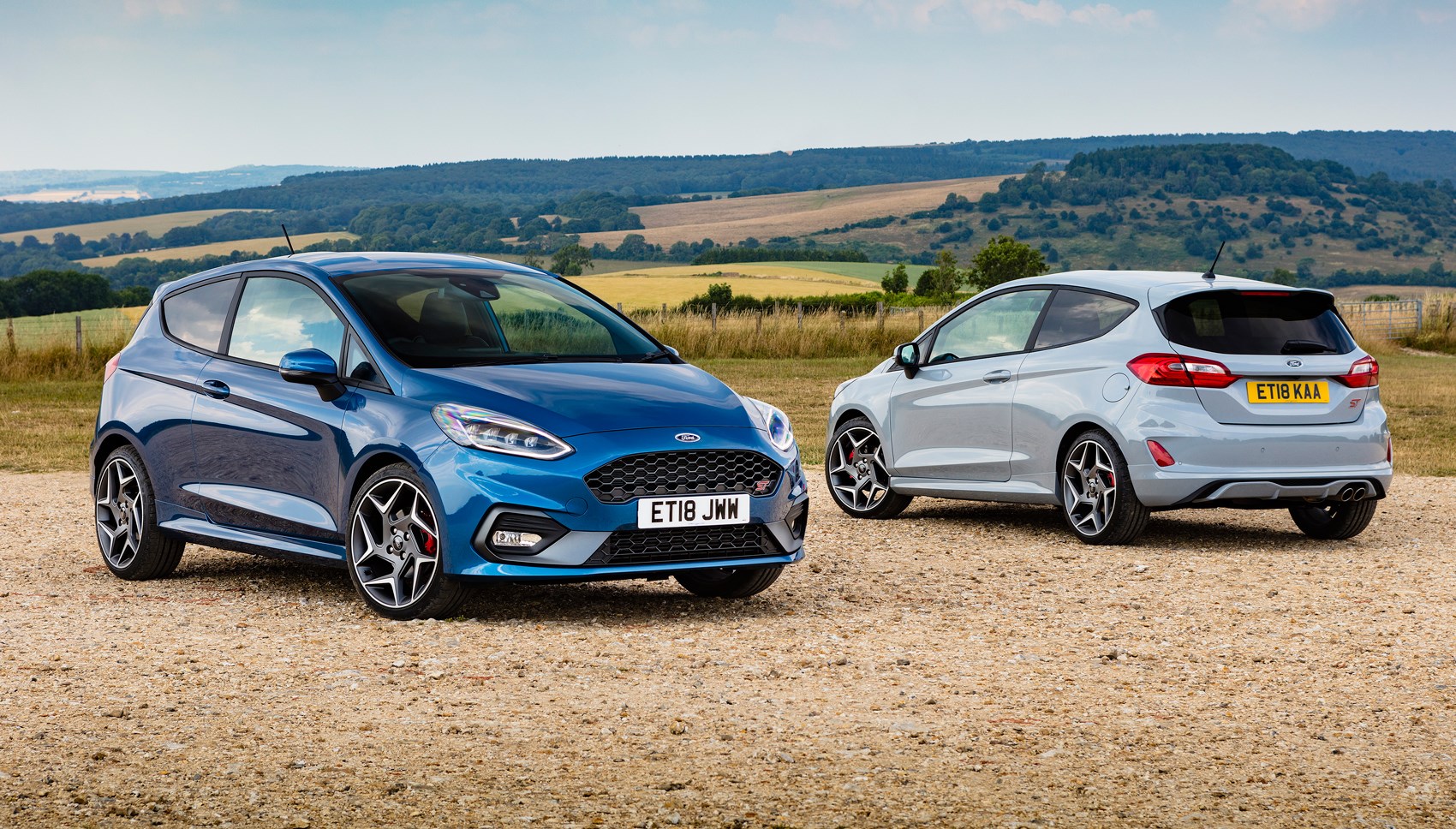
Depending on the year, specifications for earlier STs include regular ST-1, fancier ST-2 and fully-kitted ST-3 variants as well. All of which were available as three-door and five-door models.
Before we race ahead, can we have a bit of ST history?
The ST badge was first used on a Fiesta in 2004 for a mildly warmed version of the sixth-generation car. Powered by a 150bhp 2.0-litre naturally aspirated engine, it was lacking in a little punch compared with the competition but still enormously fun to drive – especially once Mountune got hold of it. Then in 2012 a new ST was announced, based on the Mk7 Fiesta, powered by a 1.6 turbo engine that put out 178bhp with an ‘overboost’ function that could deliver 197bhp in short bursts.
No one had particularly high expectations of this car until we drove it: it proved to be ‘an absolute blast,’ as we said in our five-star review in 2013 – a car to ‘plaster a smile all over your face’.
Towards the end of its lifecycle Ford raised the bar again in 2016 when it introduced the Fiesta ST200, which offered 197bhp and approached 230bhp on overboost. It too received rave reviews, and it’s this car that the 2018 ST based on the Mk8 Fiesta had to beat when it was introduced.
Was that tricky with a 1.5-litre three-cylinder engine?
The big headline change for the 2018 Fiesta ST was indeed the switch from the 1.6-litre four-cylinder to a 1.5 triple. But this brand new engine was based on Ford’s award-winning 1.0-litre EcoBoost, a work of internal-combustion magic. As such, the ST’s power unit has always proved fruity, fizzy and full of personality, and somehow – out of just three cylinders – Ford extracted a remarkable 200bhp and 213lb ft.
There is no overboost this time, so that is peak power. But given this remains a little lightweight hatchback (the three-door’s kerbweight is just 1262kg) that is more than enough oomph to make the ST a rapid car: Ford suggests the 0-62mph time is 6.5 seconds, marginally quicker than the ST200 (6.7 seconds). Top speed is 144mph.
Ford also introduced cylinder cut-off with this engine – a first for a triple. When you’re cruising with revs below 4500rpm, it becomes a 1.0-litre twin, improving fuel efficiency by a claimed six per cent.
What’s it like to drive compared with the 2013-2017 model?
Under the surface, Ford made all sorts of mechanical adjustments and improvements over the outgoing model; but behind the wheel, where it counts, it’s an even sharper, more effervescent experience than before.
But back to the oily bits. The ST’s track is 10mm wider than a standard new Fiesta and 48mm wider than the old car; the steering ratio is 14% quicker than the ST200; and torsional stiffness is up 8%. That means the steering is slightly stiff like the Focus RS, but still very direct, and you still get the overwhelming ‘just point it at a corner’ feeling.
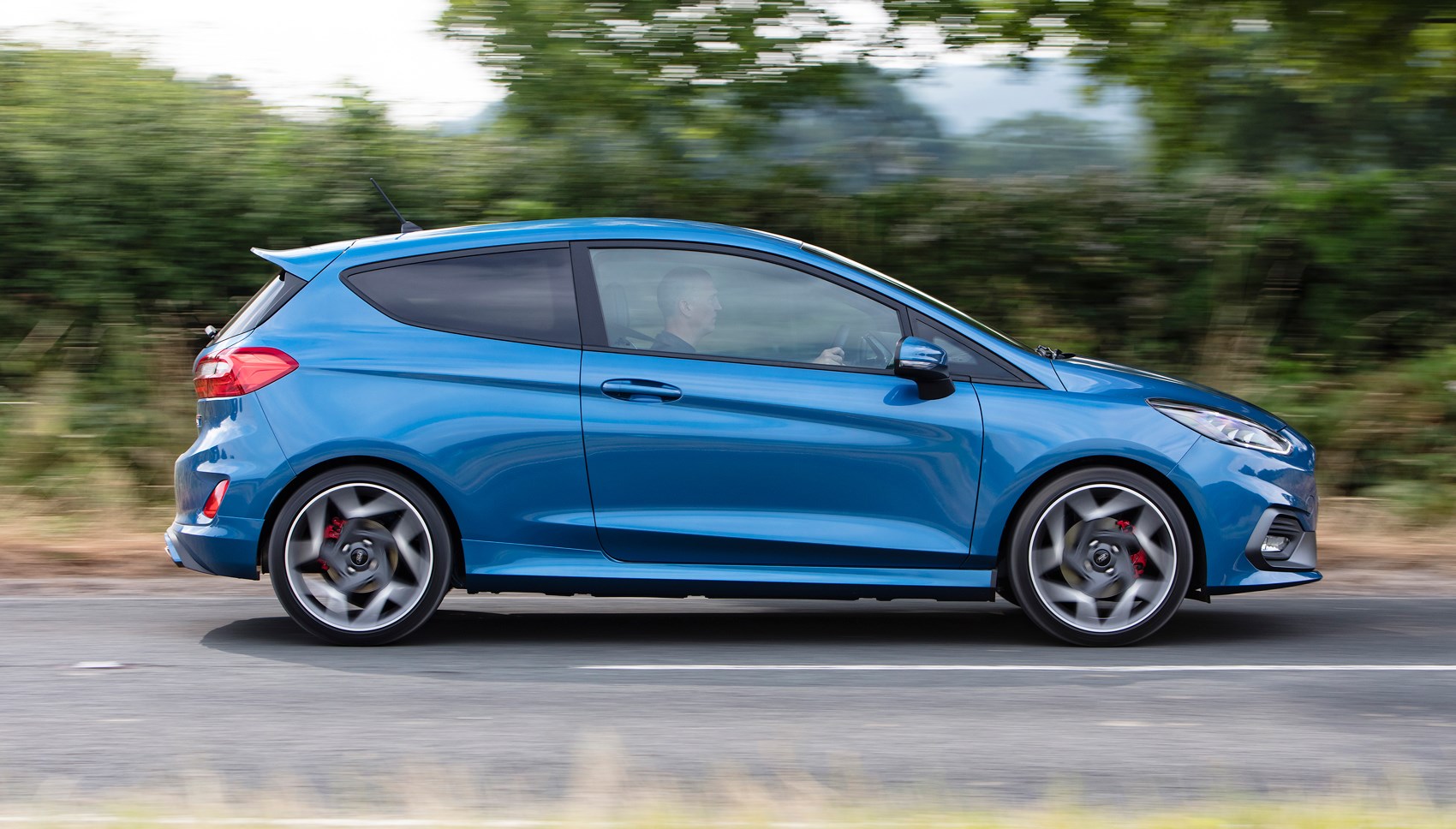
The Fiesta ST doesn’t feel loose or wayward, it always feels tight and under control, but there’s still a distinct feeling of playful adjustability in the rear axle. It makes the car feel alive and gives every corner a little dance of possible trajectories.
Ford then provided the tools to add yet more dynamism to the ST with the introduction of a Performance Pack and the chance to turn it up to 11 with the Performance Edition.
The Performance Pack comprises a trio of go-faster additions: a Quaife limited-slip differential on the front axle, a launch control system to torture the clutch and front tyres (track use only, kids…) and shift lights to tell you when you’re getting close to the redline in case you’ve got the stereo turned up too loud.
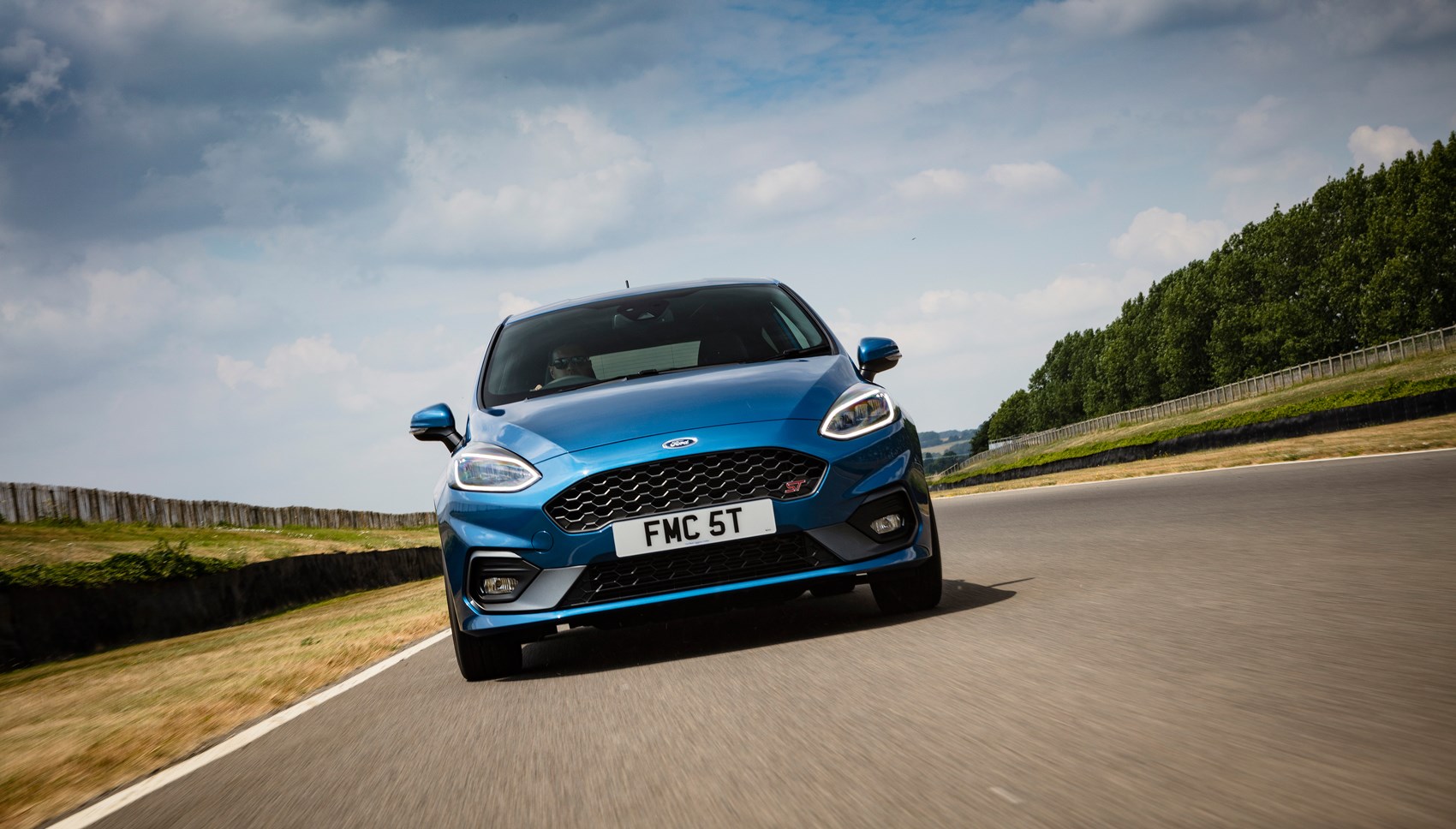
But being perfectly honest, we only need a third of this combo to make the ST into the car our testers have fallen so deeply in love with. It’s that slippy diff, and how the Fiesta’s handling responds to it.
Note that the Performance Pack is included as standard on the facelifted 2022 Fiesta ST-3 specification.
The Quaife limited-slip differential, combined with the Michelin Pilot Super Sport tyres, provides an obscene amount of grip coming out of even the tightest back-road bend, allowing you to get back on the throttle ridiculously early. There is some torque steer, of course, but not enough to ruin the feeling that you can aim and squirt this car with precision.
There’s a slight nibble at the wheel when you plant the throttle in a straight line, but if you’ve ever driven anything else of this ilk you’ll be amazed how nicely this ST’s set up.
And mid-bend you’ve got huge traction, of course, the diff doing the hard work and sending torque to either wheel according to the under-tyre adhesion. Driven without the LSD you’ll notice immediately it isn’t as adjustable on the throttle because the front end won’t bite in quite the same way, instead washing frustratingly wide. You can still get that twist-beam rear end to cock a wheel, but it’s more difficult and requires quite a lot more commitment.
That brings us onto the next frustration with the cheapest STs – you’ll work those brakes incredibly hard because the traction and stability control have a lot more to do to keep that 1.5 three-pot’s performance under control. The diff mitigates this, though we still managed to get them rather ‘warm’ on both cars during our test. Rude not to, right?
When new in 2019, the Performance Edition cost £2500 more than the ST-3, for which you gained a set of very fetching lightweight Ford Performance wheels (at 18 inches in diameter, no bigger than the ST-3’s stock rims, but lighter) and a Ford Performance coilover suspension upgrade, which both lowers the car (15mm at the front; 10mm at the rear) and brings 12-stage compression and 16-step rebound adjustment.
The damper units, finished in stainless steel with blue springs, look the business tucked up behind those very pretty wheels.
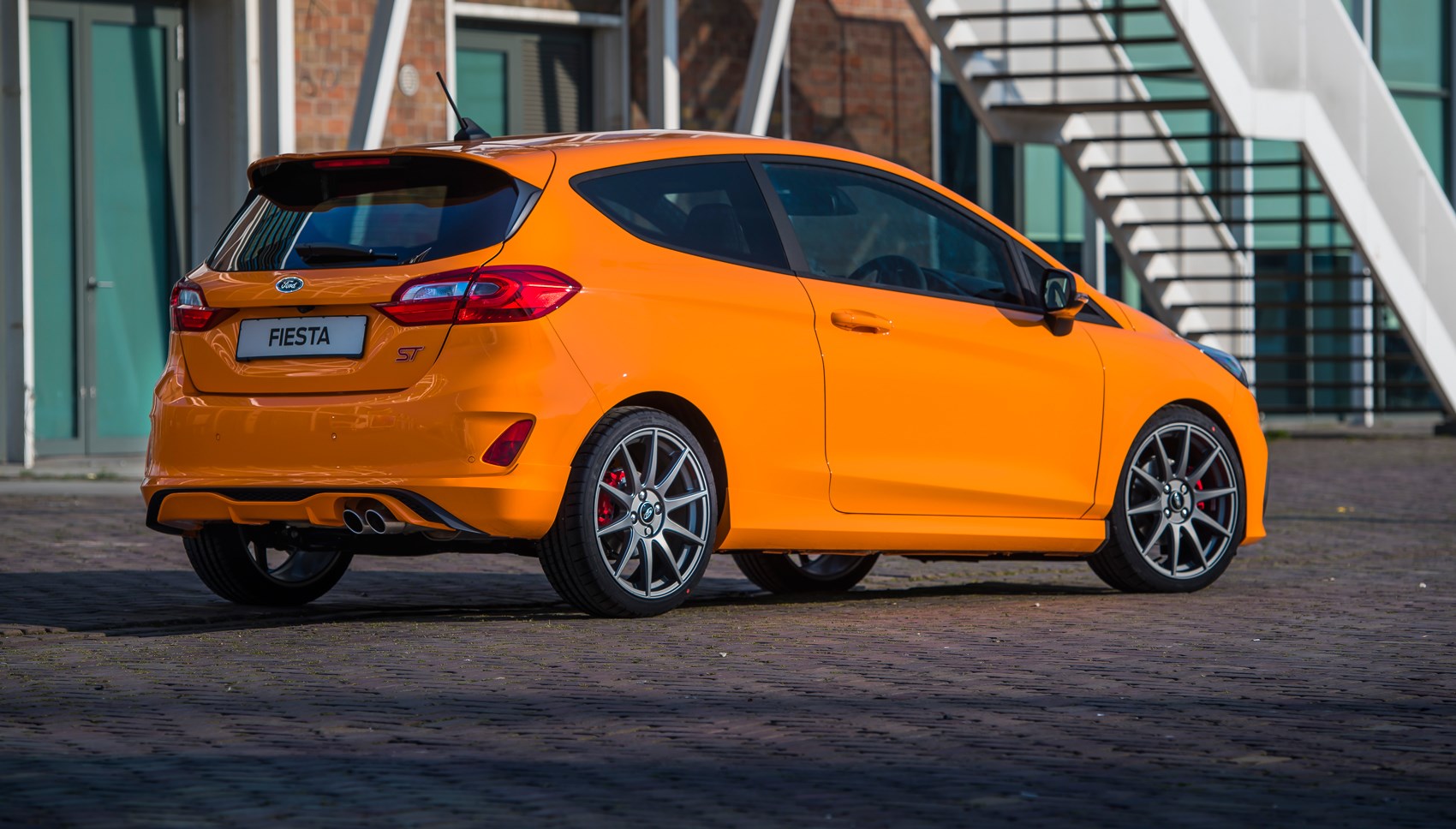
But the real juice is this Fiesta’s astonishing handling. There’s stacks of grip, direct and meaty steering, unwavering body control and a deeply rewarding sense of connection with your tyres. Understeer’s there only if clumsily provoked – mostly the Fiesta just changes direction like a housefly and offers more adjustability than many rear-drive sports cars. The standard car shares many of these qualities but the Performance Edition elevates them all to another level of ultra-crisp definition.
Ford Fiesta ST Edition
Launched in 2020, the ST Edition was limited to just 500 units across Europe, and sold out quickly, despite the £27k asking price.
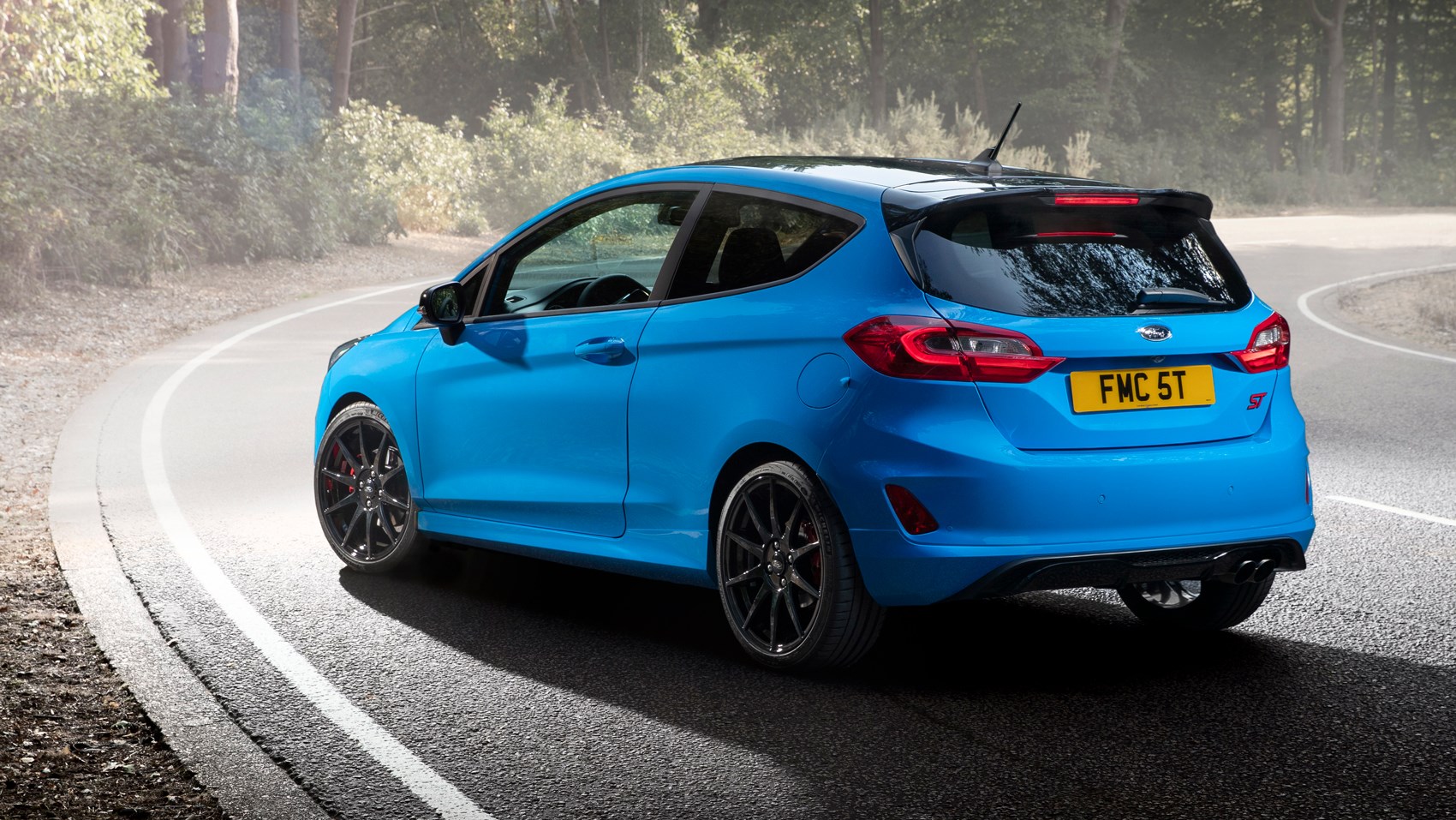
As with the Performance Edition, this gained 18-inch wheels 2kg lighter than the regular ones (now finished in black) and two-way adjustable coilover suspension. There was also a Sport button on the steering wheel (something the 202 facelift car also has) and bespoke Azure Blue paint, similar in our eyes to the Nitrous Blue of the last Focus RS.
Again, if you can find one, and stomach the cost, it’s an absolute solid gold diamond (we know) to drive…
What else was new on the 2018 Fiesta ST?
In terms of fixing flaws, the driving position is much better in this car – you can now pump a lever and lower yourself towards the floor, instead of feeling like you’re perched in a child’s high chair like the old one.
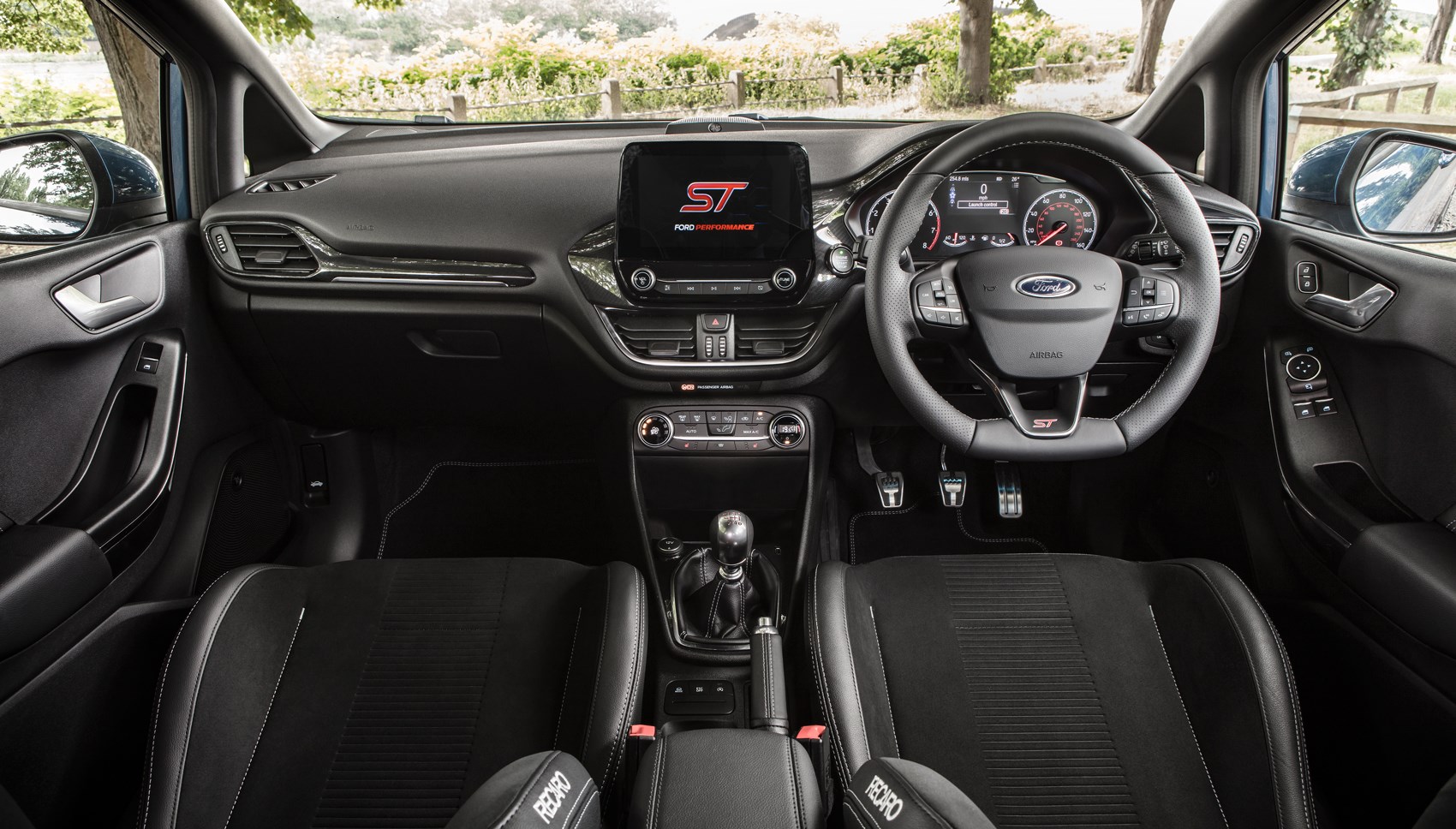
However, the bone-jarring ride is only partially resolved. Ford talks a lot about the new ‘directionally wound force vector springs’ and ‘frequency selective dampers’, and there’s no denying this is clever, brilliantly sorted chassis – but let’s not kid ourselves. There’s still a lot of vertical jigglingly and bouncing going on, so much so that on an uneven back road you have to concentrate just to get your finger in the right place on the touchscreen.
It doesn’t sound like the ST has ‘matured’ that much…
Actually, that’s the great thing about the latest Fiesta ST: it has taken some big strides forward in terms of refinement. We like the Fiesta family look, and the ST isn’t too bling – just a few red details and a honeycomb grille. It’s not an embarrassing car to drive.
The interior is a huge upgrade, with a much more modern ambience, and the latest digital screen tech, albeit with materials not quite of the highest quality in places. Altogether, it does feel like a more grown-up car to own, without losing that ridiculous playfulness if you want to drive flat-out.